Download document () of 20
Download
You have exceeded the download limit
This buying guide will help you:
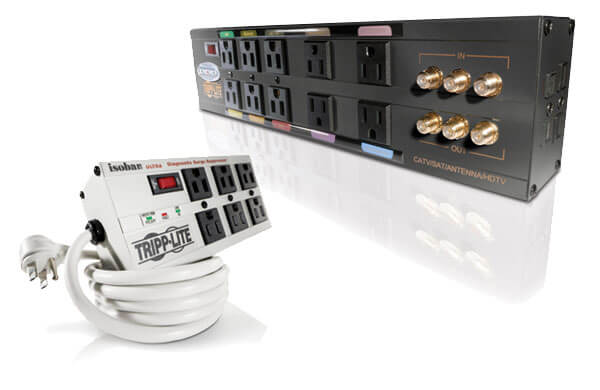
Surge protectors guard electrically powered equipment against power surges and spikes, which are temporary and potentially damaging voltage increases along electric wires and cables. These small devices are plugged into wall outlets, either directly or via cable, and offer one or more protected outlets for safely powering connected devices.
Surge protectors typically use metal oxide varistors, or MOVs, to absorb excess AC voltage and allow only acceptable current levels to reach powered devices. They may also protect against line noise from electromagnetic interference (EMI) and Radio Frequency Interference (RFI).
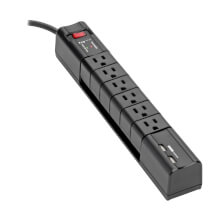
What equipment needs surge protection?
Any device that plugs into an AC outlet can benefit from a surge protector. The most vulnerable pieces of equipment are those with memory and sensitive electronic circuitry. A surge protector is essential for:
Note: If you need to protect a computer, consider an uninterruptible power supply (UPS), which provides surge protection and battery backup to allow a safe power-down in the event of an outage.
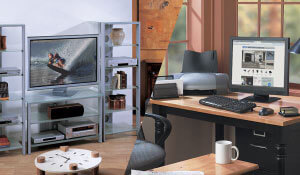
Surge protectors use a joule rating to indicate the total amount of surge voltage they can absorb without failing, whether in a single event or over a series of surges. A higher joule rating typically indicates stronger protection.

Some surge protectors use LED lights and/or audible alarms to indicate they are no longer providing an adequate level of power protection to connected equipment. These indicators should be monitored regularly, so the surge can be replaced immediately if necessary.
For additional safety, surge protectors can offer an automatic shutoff feature, which prevents power from reaching connected devices entirely if the protection becomes inadequate.
Wondering what to look for in a surge protector? These three questions will help you determine what kind of surge protector you need.
The value of the equipment you want to protect is the most important consideration when choosing a surge protector. Devices that are critical to work/home life and those that are otherwise costly or fragile require a greater degree of protection. A higher joule rating is the best indicator of greater protection.
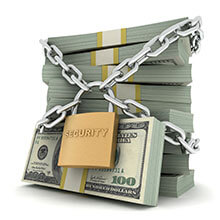
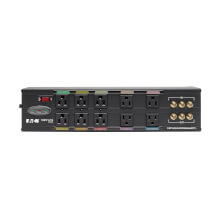
Look for surge protectors that protect hot, neutral and ground lines (3 line protection) for the most thorough protection.
Computers and network equipment can be susceptible to power surges travelling over Ethernet (or coaxial/telephone/modem) cables. If you are using a wired Ethernet connection for your computer, look for a surge protector with one or more protected Ethernet jacks.
"In-line" surge protectors can offer protected Ethernet ports to safeguard Power over Ethernet (PoE) applications.
Hospital-grade surge protectors have safety enhanced outlets and plugs. They may also include special features that protect against electric shock and anti-microbial coating to inhibit the growth of bacteria on the device.
Some surge protectors offer the ability to switch off power to individual devices without interrupting power to all connected devices, which can improve efficiency and convenience in device management.
If you are travelling with equipment that needs protection, look for surge protectors with fold-down plugs and compact designs that can easily be stored in luggage, purses, briefcases and backpacks.
Some in-line PoE surge protectors are IP66 rated for resistance to dust and water. These are ideal for outdoor applications like security cameras or digital signage.
A surge protector's job is to absorb the brunt of power surges and spikes so your equipment doesn't have to. This will take a toll over time, so look for models that come with lifetime replacement warrantees as well as insurance to repair or replace any connected equipment damaged by surges.
Do not confuse surge protectors with power strips. Both products provide outlets for powering multiple devices from a single wall outlet, and power strips often look similar to surge protectors. But only surge protectors will guard connected devices against power surges and line noise. Look for words on the product or packaging like "surge", "protection" or "suppression," and also look for a joule rating.
Power surges and power spikes can be differentiated by their duration, with a power spike lasting 1 or 2 nanoseconds and a power surge lasting 3 nanoseconds or more, sometimes several seconds or even minutes. A power spike, while shorter, can involve a far higher voltage increase and is often caused by an electrical storm. Both surges and spikes can damage appliances, corrupt data on computers, and in extreme scenarios, they can start fires.
Yes. Products like an uninterrupted power supply (UPS) and a power distribution unit (PDU) will typically include a degree of surge protection. A UPS will also provide battery power backup to connected devices in the case of an AC power outage. Look for some of the same criteria, like a joule rating, to evaluate the protection they provide.
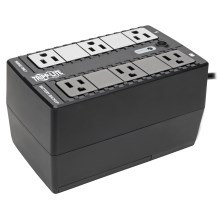
Make sure your surge protector is RoHS (Restriction of Hazardous Substances) compliant. Features like individual outlet control and other special circuitry will reduce energy consumption and lower utility bills.

It depends on the device's joule rating and the frequency and severity of the surges it absorbs. The key is to check the LED indicator to ensure your device is providing adequate protection and/or purchase a surge protector with an auto-shutoff feature.
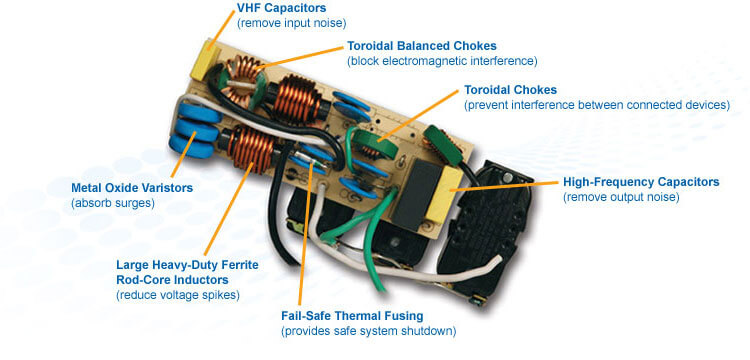 Components inside an Eaton Isobar premium surge protector prevent power problems from damaging your equipment.
Components inside an Eaton Isobar premium surge protector prevent power problems from damaging your equipment.
Automatic Shutoff - Feature found on select surge protectors which automatically prevents power from reaching connected devices once the suppression circuit on a surge protector has been compromised.
EMI/RFI - Electromagnetic Interference (EMI)/ Radio Frequency Interference (RFI) are distortions or "line noise" on AC, telephone/modem, network or coaxial lines. They usually show up as audio static or video "snow" and are caused by other equipment operating on the same electrical system as the affected device.
Joule Rating - Surge protectors use a joule rating to indicate the total amount of surge voltage they can absorb without failing, whether in a single event or over a series of surges. A joule rating of 400-600 indicates a minimal level of surge protection, whereas a joule rating of 1000 or more is considered a high level of protection. To read more about joule ratings, click here.
MOVs - Metal oxide varistors are triggered when excess current passes through a surge protector. They are the components in the device that actually absorb the surge from the power source and divert it to the ground wire.
PoE - Power over Ethernet, as the name implies, is a technology for delivering power and network connectivity over a single Ethernet cable. This makes it ideal for powering and connecting IP devices like security cameras, access control readers, wireless access points (WAPs), VoIP telephones, POS systems, sensors and lighting.
Power Surge - A power surge is a temporary, unwanted and potentially dangerous increase in an electrical system. It is most often caused by a power grid interruption, followed by a resumption in which the line voltage is higher than normal.
Power Spike - Very short (1 or 2 nanoseconds) and potentially extreme voltage increase in an electric system, often caused by an electrical storm.
Choose from a wide selection of Surge Protectors for home, office, IT, industrial and medical environments.
We know you have many brands to choose from. On the surface, they may all seem alike. It's what you don't see that makes the difference. With Eaton, you get solid engineering, proven reliability and exceptional customer service. All our products undergo rigorous quality control before they are offered for sale, and independent testing agencies verify our products meet or exceed the latest safety and performance standards. Our commitment to quality allows us to back our products with industry-leading warranties and responsive customer service. It's the Eaton difference.